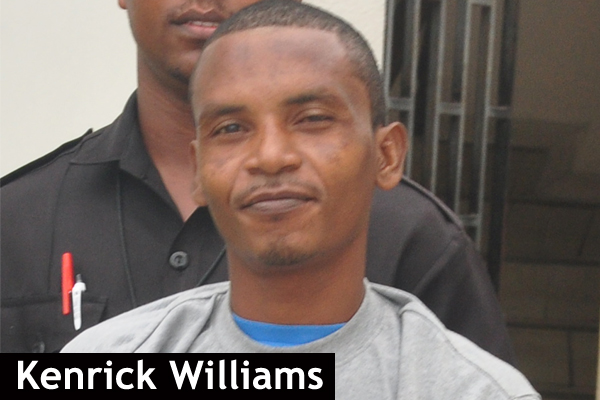Williams, 36, was found guilty of murdering a 16-year-old student, after raping her
Kenrick Williams, 36, a convicted murderer whose first trial ended in a hung jury, but who was nonetheless convicted after a second trial and sentenced to life in prison, lost his appeal today when three Court of Appeal Justices dismissed his case and affirmed his conviction and life sentence.
In March 2004, Elia Gonzalez, 16, a second form student, got off the bus at the Libertad junction, but never reached her home. The teenager was ambushed by Williams, who pulled her into a bushy area, then raped and strangled her.
Williams was connected to the murder through a ring that belonged to Gonzalez that he was attempting to sell. At the time, he was described as a vagrant who was observed hanging around Libertad. Police arrested him and he was charged for the murder.
He gave a caution statement to police, describing how he and Gonzalez, who he said was his “secret girlfriend,” had consensual sex and that he was choking her during the act. He admitted to accidentally strangling her, and further explained that he tied her up with her shoelaces when she had stopped moving.
In December 2009, Williams went on trial in the Corozal Session of the Supreme Court with Justice Herbert Lord presiding over the case. After deliberating for four hours, the twelve-member jury returned with an 11-1 guilty verdict. A murder verdict, however, has to be unanimous; all 12 jurors must agree, otherwise a hung jury is declared and a new trial must take place.
Eight years after the murder was committed, Williams was found guilty in July 2012, when his case was presided over by Justice Dennis Hanomansingh in the Corozal Supreme Court.
Apart from the circumstantial evidence, the caution statement that Williams gave to police appears to have played a pivotal role in his conviction for Gonzalez’s murder. His attorney, Phillip Palacio, pegged his hopes on that caution statement to steer a successful appeal of the conviction and consequent life in prison sentence through the Court of Appeal, when he used it as the primary legal ground for Williams’ appeal.
The caution statement, Palacio submitted to Court of Appeal president Hon. Justice Manuel Sosa and appeal Justices Minnet Hafiz-Bethram and Samuel Awich, was obtained under duress.
Palacio argued that the learned trial judge had failed to give the jury the “Mushtaq direction” in reference to the caution statement.
“There was evidence coming from the accused at the trial that he was beaten by police at the Corozal Police Station. The confession was obtained by oppression,” Palacio submitted, “in that it was a breach of the Judges Rules.”
Palacio further argued that Williams had admitted to finding Gonzalez’s ring, and “the verdict was unreasonable” because, “some of the detailed description should have been excluded from the jury, because they placed the Appellate at the crime scene.”
Justice Sosa asked Palacio, “You don’t think that the circumstantial evidence placed him at the crime scene?”
Director of Public Prosecutions (DPP) Cheryl-Lynn Vidal, the respondent, submitted: “no miscarriage of justice occurred, because the evidence led by the Crown was sufficient to establish the case against him. The evidence, though circumstantial, was enough.”
Vidal argued that two prosecution witnesses placed Williams at the crime scene, and the same evening when the crime was committed, he (Williams) sold a ring which belonged to the deceased to another prosecution witness.
“Another prosecution witness testified that the accused passed by her house and attempted to sell her a watch,” Vidal told the court.
Quoting from the caution statement, Vidal said that Williams told police, “I hold the girl from her neck, when I found out that she was not breathing, [and] I continued having sex with her. When I finished having sex with her, she was still not moving, so I tied her neck and left.”
After the hearing, DPP Vidal told Amandala that the Crown’s case was based on the caution statement made by the appellant and by circumstantial evidence.
Vidal explained that if the applicant is alleging in the main trial that the statement was obtained under improper means, the judge is required to give what is called a Mushtaq direction to the jury, telling them that if they formed the view that the statement was obtained by improper means, they should disregard it.
“The judge, in this case, failed to give the Mushtaq direction, so I had to concede that point,” Vidal said.
But, Vidal went on to explain, Palacio had used “accident” as one of his grounds, but the accident did not arise on the facts, so no direction to the jury was necessary.

